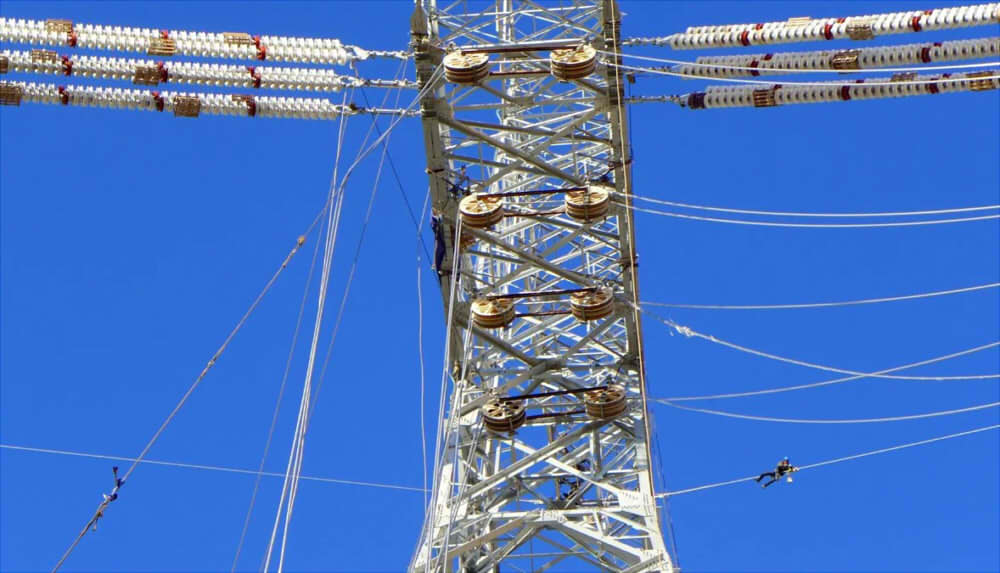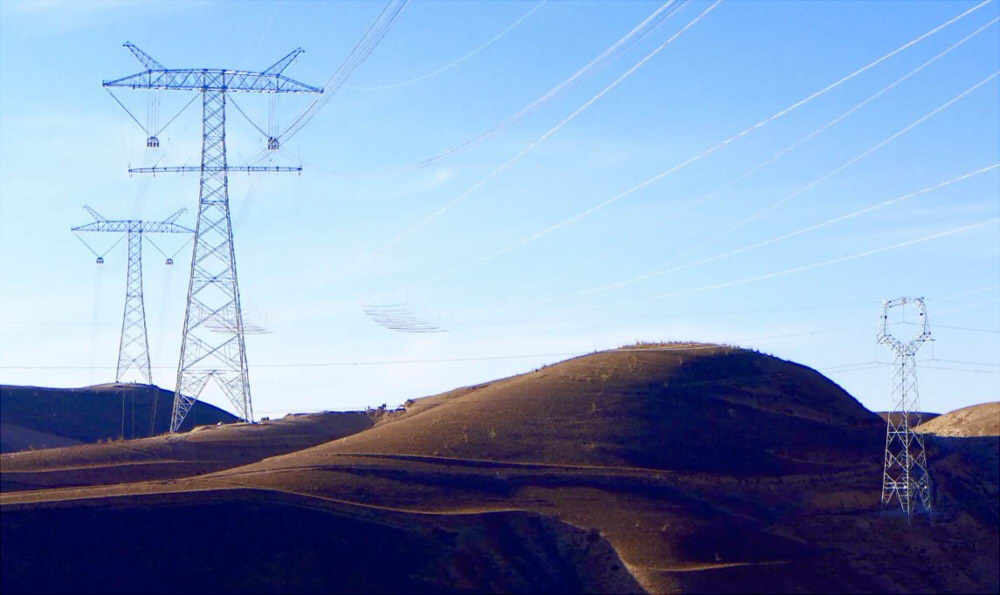High-voltage transmission is a key step in large-scale electricity transmission. Usually, high voltage transmission is long distance transmission. So, why use the dangerous HV lines to transmit electricity? In fact, the main purpose of using high voltage is to reduce unnecessary losses in transmission over long distances.
– Principle of High Voltage Transmission
– Why is it necessary to transmit electricity over long distances??
– Why Are Aerial Cables Used for High Voltage Transmission??
– What is EHV Transmission?
– Advantages of EHV Transmission
Principle of High Voltage Transmission
Usually, The power of the generators of power plants is only 5 a 18 kV. Nevertheless, when connected to the mains, the voltage rises first to 220 kV of 330 kV. In long-distance transmission, power losses are significant. To reduce energy losses, the DC resistance of the power cable is required to be as low as possible.
There are two ways to reduce power transmission losses. One of them is to increase the cross-sectional area of the conductor. Nevertheless, a thicker cable radius leads to an increase in its weight and overall cost.

Another method is to increase the transmission voltage. As the cable tension increases, transmission current can be significantly reduced. Thus, the losses in the transmission power line they are much smaller.
According to the formula for electrical power, The transmitted power is equal to the product of voltage and current. (P=UI). at equal power, the higher the cable tension, the lower the transmission current. Besides, cable losses are proportional to current and inversely proportional to transmission voltage (P=I2*R).
Currently, Some power plants have increased their transmission voltage to the ultra-high voltage level of 500 kV – 1000 kV. This allows an exponential increase in power transmitted on cables of the same diameter and reduces power loss..
Why is it necessary to transmit electricity over long distances??
Long-distance transmission of electricity is related to the source of electricity generation. The most common sources of electricity generation are thermal energy, the hydraulics, the nuclear, wind and solar. As the distribution of natural resources varies from one region to another, the capacity to generate electricity varies greatly. Therefore, most electricity has to be transmitted over long distances to reach different regions.
And in the course of long-distance transmission, electricity incurs enormous losses.. Therefore, only by increasing the tension can the efficiency of the transmission be maximized. High voltage transmission consists of raising the voltage before sending it to its destination. And no electricity is needed to travel the distance to it..
Why Are Aerial Cables Used for High Voltage Transmission??
Currently, No effective insulating material can be found for the insulation of the outer covering of the ultra high voltage cables. Usually, HV cables are left bare and use air as insulation.
Besides, underground cables are more complex than overhead cables. To avoid external damage, underground lines often require layers of armor. Usually, underground cables are technically demanding and more difficult to fabricate and lay. The cost of an underground cable of the same voltage level can be several or even tens of times higher than that of an overhead cable.. If all HV transmission lines were replaced by underground cables, especially over long distances over complex terrain, costs and technical requirements would skyrocket.
What is EHV Transmission?

EHV refers to the extra high voltage level of 1000 kV y superior. EHV transmission is developed on the basis of HV transmission. The goal is to achieve higher power transmission over long distances and the interconnection of systems to create a combined power system..
It is estimated that the capacity of one line transmission from 1150 kV can replace five or six lines of 500 kV, or three lines of 750 kV. The use of EHV cable can reduce by a third the material used for electrical towers, save half the use of conductors and save between a 10 and a 15% of the cost of the network, including substations. This can bring significant economic and social benefits to countries and regions with high population density and valuable land..
Advantages of EHV Transmission
(1) EHV can meet large-scale power transmission requirements, long distance and high efficiency. Usually, the distribution of energy resources is uneven in most areas. The distance between the large energy bases and the load centers is usually 1.000 a 3.000 km. Therefore, EHV transmission technology with large transmission capacity needs to be vigorously developed, long distance and high efficiency.
(2) The use of extra high voltage power transmission is environmentally friendly. This is because intensive development and efficient use of clean energy are inseparable from long-distance transmission.. The eolic energy, Solar and other types of clean energy are transmitted on a large scale and over long distances to urban areas with high electricity demand. Thus, fossil energy consumption and polluting emissions can be reduced.
(3) EHV contributes to improving the safety of electrical grid operation. The use of EHV hybrid AC-DC network transmission can greatly reduce the problems of insufficient transfer capacity and weak support of the reactive voltage. This will reduce the risk of blackouts occurring in large areas of the network. And it can create the conditions for a gradual operation by layers and zones of the next level of the network. Besides, it can also solve problems such as short-circuit current overcurrents and improve the flexibility and reliability of network operation.
(4) The use of extra high voltage cables favors the improvement of comprehensive social benefits. Compared to HV and UHV transmission, the use of EHV transmission can save a large amount of placement area and improve the efficiency of ground resources.
